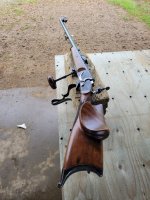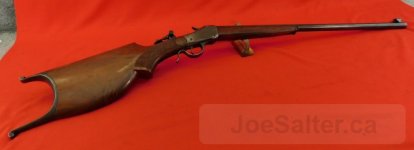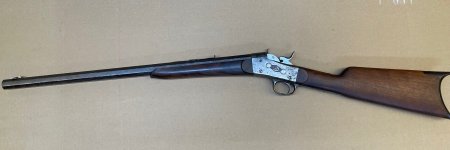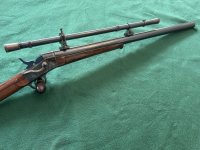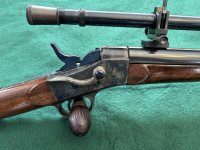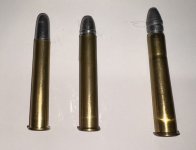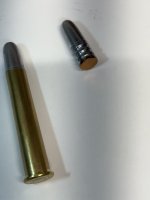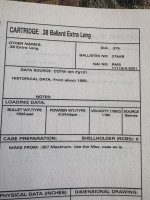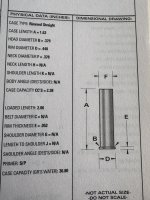Gent's
A few years ago I found a sporter #1 rolling block. The bore was a washed out 44 caliber. I converted the block to center fire and lined it with a .357 liner. I chambered it in .357 magnum.
I use it for plinking with mild target loads, and black powder.
I asked a board member of the Alberta black powder association, if I could use it in in black powder cartridge rifle competition. He replied, only with original BP calibers.
Which made sense.
I could use my 45 70 for that. But think it's a waste of powder and lead, if the distances are only up to 100 meters.
I thought if I can find a bp caliber in around .357, I could open up the chamber to that cartridge.
In the "Cartridges of the world" book, I found the .35 30 Maynard 1882. In the article it mentioned 358 caliber bullets. They also mentioned making brass from the 38-55.
The cartridge in the picture looked like a straight walled case. Some research revealed that the brass, for the .35-30 1882 was, is, slightly bigger than the .357 rem. maximum brass. The bullet diameter was .359 .
I wonder if that is acceptable, to use a .357 maximum case and sell it as .35 30 Maynard 1882, to be in compliance with the rules. That would be the easiest fix for me since I have axess to a 357 max reamer and already have the bullet molds.
What do you guys think?
Or do I have to find a barrel in 32 or 38 caliber.
Thanks for reading.
WW
A few years ago I found a sporter #1 rolling block. The bore was a washed out 44 caliber. I converted the block to center fire and lined it with a .357 liner. I chambered it in .357 magnum.
I use it for plinking with mild target loads, and black powder.
I asked a board member of the Alberta black powder association, if I could use it in in black powder cartridge rifle competition. He replied, only with original BP calibers.
Which made sense.
I could use my 45 70 for that. But think it's a waste of powder and lead, if the distances are only up to 100 meters.
I thought if I can find a bp caliber in around .357, I could open up the chamber to that cartridge.
In the "Cartridges of the world" book, I found the .35 30 Maynard 1882. In the article it mentioned 358 caliber bullets. They also mentioned making brass from the 38-55.
The cartridge in the picture looked like a straight walled case. Some research revealed that the brass, for the .35-30 1882 was, is, slightly bigger than the .357 rem. maximum brass. The bullet diameter was .359 .
I wonder if that is acceptable, to use a .357 maximum case and sell it as .35 30 Maynard 1882, to be in compliance with the rules. That would be the easiest fix for me since I have axess to a 357 max reamer and already have the bullet molds.
What do you guys think?
Or do I have to find a barrel in 32 or 38 caliber.
Thanks for reading.
WW















































